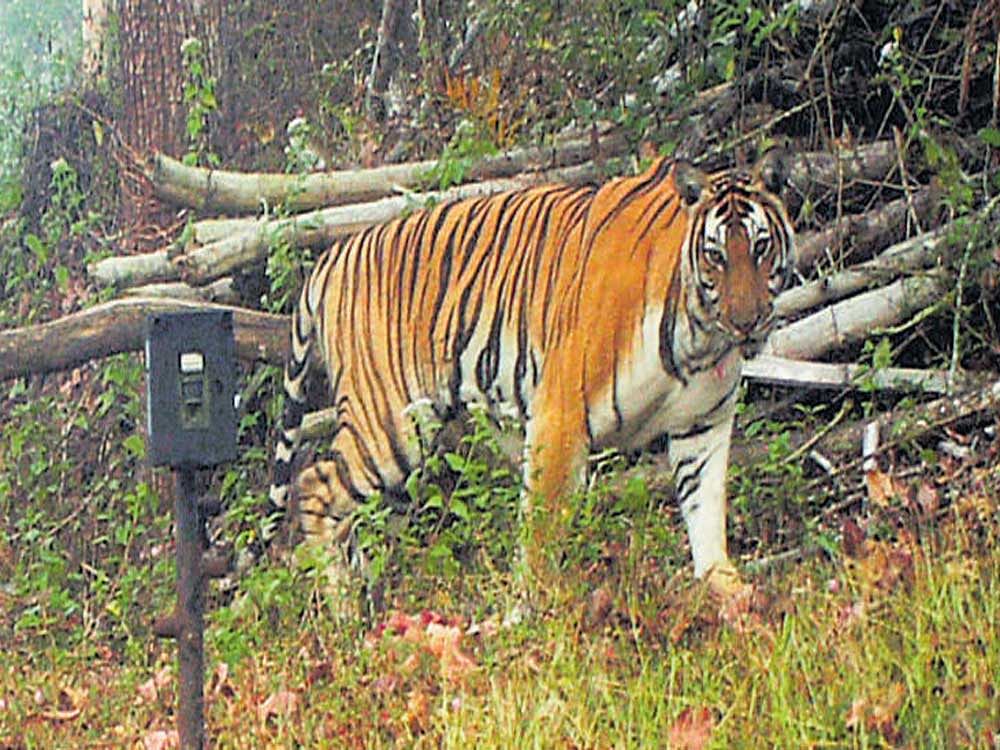
The Rajiv Gandhi Wildlife Sanctuary (Nagarahole) has seen an increase in tiger population and is all set to top the list in South India.
According to a recent survey, the total number of tigers spotted this year in Nagarahole is 91, an increase of eight, compared to last year. Conducive environment in Nagarahole is said to be the reason behind the increase in the population of the wild cats. Setting up of the Nagarahole National Tiger Project, is also one of the reasons.
Census
The 45-day census conducted in November-December 2016, has shown an increase of eight tigers in the region. According to available statistics, there were 83 tigers in 2015-16 and 91 tigers have been spotted in the year 2016-17, said Nagarahole Tiger Project director Manikantan.
All Indian Tiger Estimation was launched in the year 2014-15. Later, 360 cameras were installed in the 640-sq kilometre area, where tigers are frequently spotted and also near the water sources. Later, the pictures captured are verified on computers and on the basis of the stripes on the tiger’s body, the age and gender are classified.
Each tiger has its own territory. Scientifically, one male tiger identifies 2,500 acres as its territory, and a female tiger five-kilometre limits. The cubs grow with the female tigers.
Breeding
As the forest has a large number of deer, bison and other animals, the tigers have no shortage of prey, turning Nagarahole into a perfect breeding place for tigers.
Speaking to DH, Manikantan said the tigers were roaming freely in Wayanad, Bandipur, Mudumalai, BRT Tiger Project, Sathyamangalam, Cauvery Wildlife Sanctuary and Male Mahadeshwara forests.
However, the tiger corridor faced trouble in some places and turned a threat to the tiger population. However, recent measures taken by the Forest department have resulted in the increase in tiger population, Manikantan added.